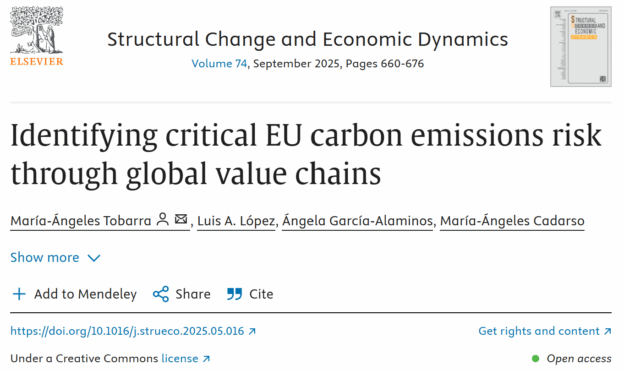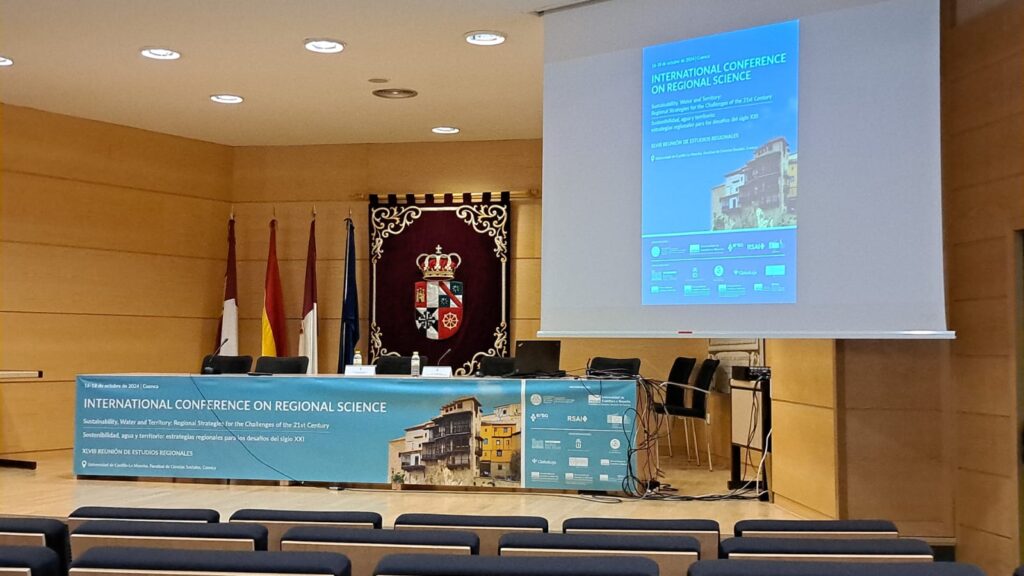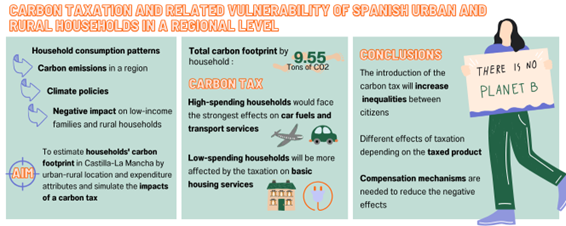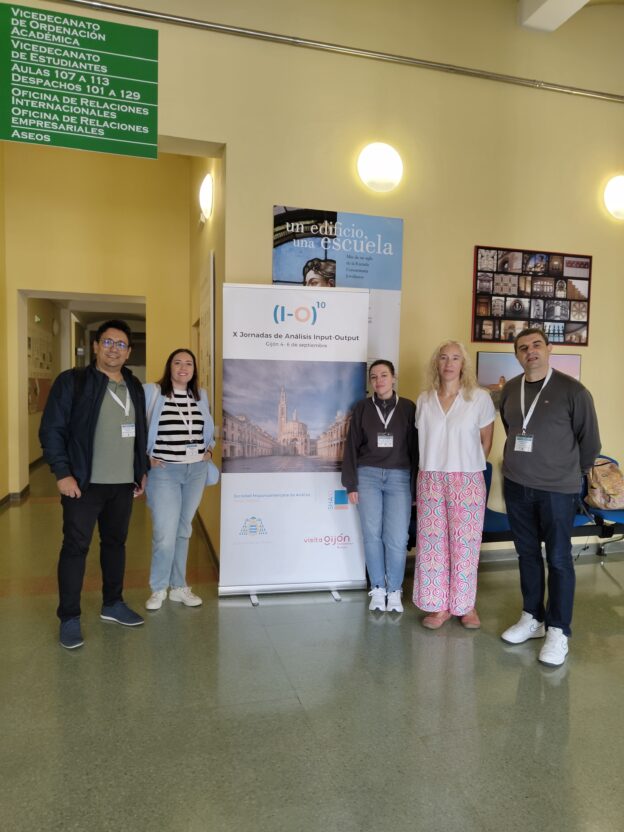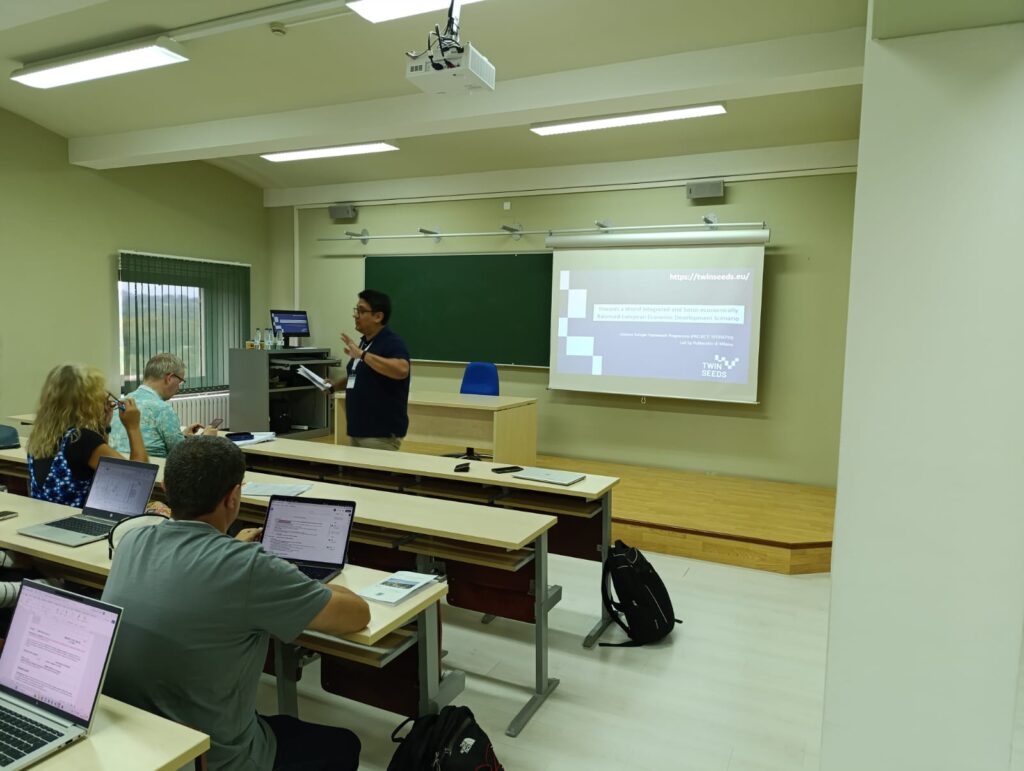The GEAR members María Ángeles Tobarra, Luis A. López, Ángela García-Alaminos and María Ángeles Cadarso have recently published the paper entitled “Identifying critical EU carbon emissions risk through global value chains” in Structural Change and Economic Dynamics. The article is a result of the European Commission under Horizon Europe project TWIN SEEDS (Towards a World Integrated and Socio-economically Balanced European Economic Development Scenario), grant number 101056793 (https://doi. org/10.3030/101056793).

This study examines the distribution of carbon emissions across global value chains (GVCs) and identifies the sectors within the EU that are most vulnerable to carbon-related risks. Using environmentally extended input-output analysis, the authors map both upstream and downstream carbon “hotspots” and introduce a novel Climate-Reshoring Index (CRI) to assess sectoral vulnerability to carbon dependency and trade disruptions.
Key findings reveal that the sectors emitting and consuming carbon-intensive goods are not the same. For example, Electricity & gas and Basic metals (especially from China and Russia) are major upstream emission sources, while Russian refined petroleum products dominate downstream imported emissions. Sectors like Chemicals and Metals show over 50% of their carbon footprint as imported. The most at-risk sectors, according to the CRI, include Computer, electronic and optical equipment, Pharmaceuticals, and Electrical equipment—all critical to the EU’s strategic autonomy. The study emphasizes the need for EU policies to account for sector-specific carbon exposure to enhance both climate goals and economic resilience
You can find the full text here:
https://www.sciencedirect.com/science/article/pii/S0954349X25000876?via%3Dihub

